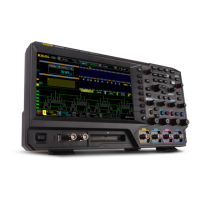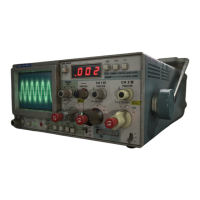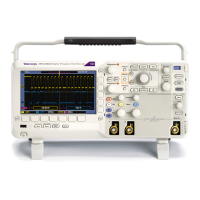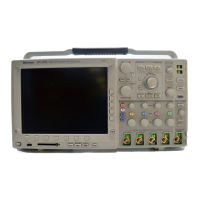Oscilloscope Reference Math waveform d ifferentiation
Mathematical operations on one or several waveforms: add, subtract, multiply, and divide.
Functional transformations of waveforms, such as integration, differentiation, and so on.
Spectral analysis of waveforms, such as testing impulse response.
You can create up to four math waveforms.
Measurement scalars can be used in math expressions. For example, you can measure the average of
a waveform (using the measurement capabilities of the instrument) and subtract it from the original
waveform to define a new math waveform. Measurements 1 through 8 a re allowed in a math definition,
but not measurement functions, such as rise (Ch1).
This instrument supports the following operations for math waveforms:
Vertical display scaling and positioning
Taking automatic measurements
Taking cursor measurements
Using histograms
User defined v ertical units
In addition to the operations listed above, you can save math waveforms as reference waveforms.
You cannot use the following math waveforms for some operations:
Circular Math-on-Math. You cannot use circular definitions of math waveforms. For example, if you
defineMath2=Ch1-Math1,andthendefine a second math waveform as Math3 = Ch2 + Math2, you
cannot define a third math waveform as Math1 = Math2 + Ch3. If you do, the Math1 definition is
rejected with an error because a circular definition is not allowed.
Fast Acquisitions. Math is not allowed in Fas
t Acquisitions mode.
Roll Mode. Math is not allowed in roll mode until you push STOP.
Different Length Sources. If you use two waveforms (channel and reference waveforms) of different
lengths, the length of the math waveform will be the shorter of the two lengths.
What do you want to do next?
Learn about creating math waveforms. (see page 743)
Go to a step-by step procedure for using math waveforms. (see page 606)
Math waveform differentiation
The math capabilities of the instrument include waveform differentiation. This allows you to display a
derivative math waveform that indicates the instantaneous rate of change of the waveform acquired.
Derivative waveforms are used in the measurement of slew rate of amplifiers and in educational
applications. You can create a derivative math waveform and then use it as a source for another derivative
waveform. The result is the second derivative of the waveform that was first differentiated.
746 DSA/DPO70000D, MSO/DPO/DSA70000C, DPO7000C, and MSO/DPO5000 Series

